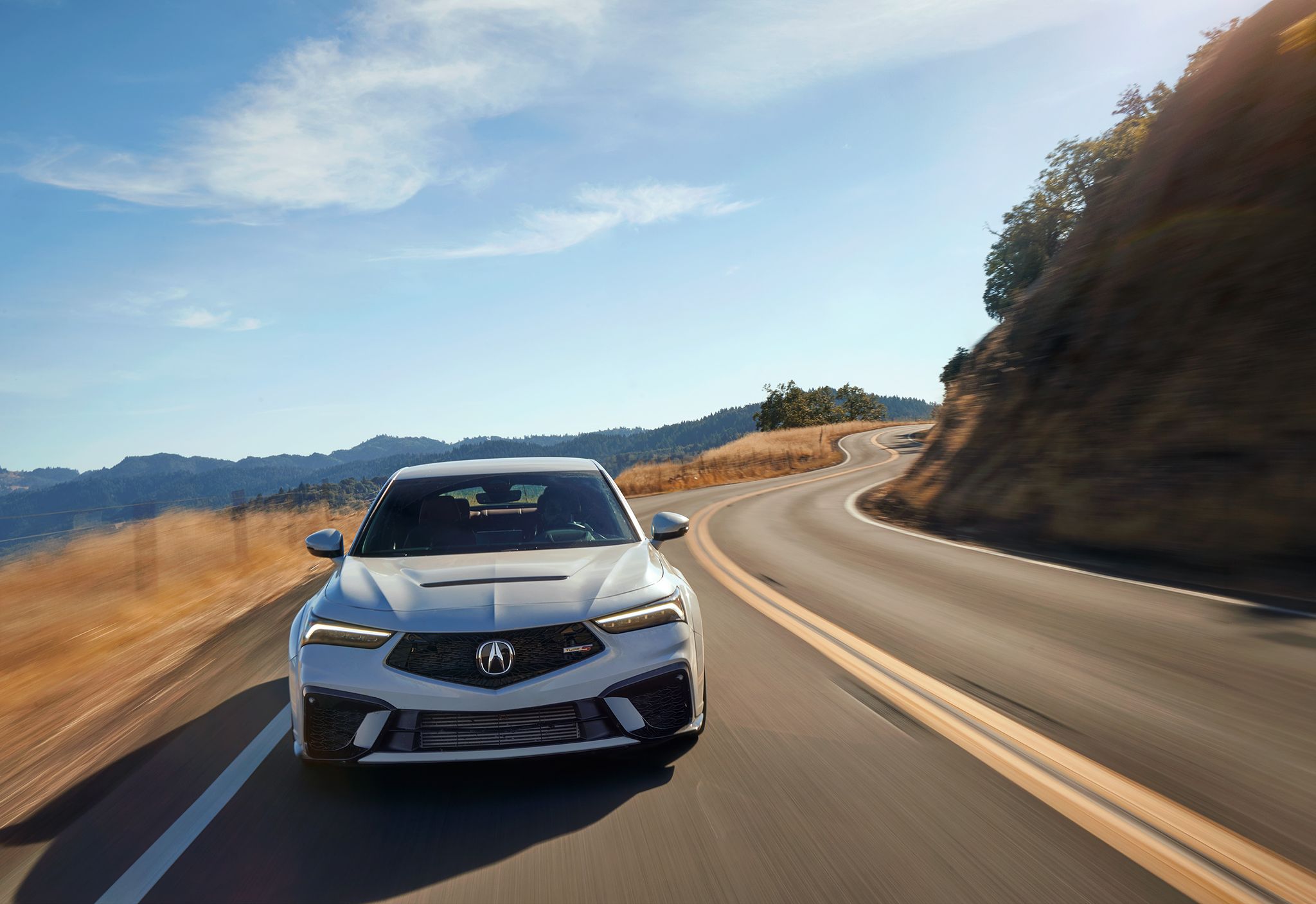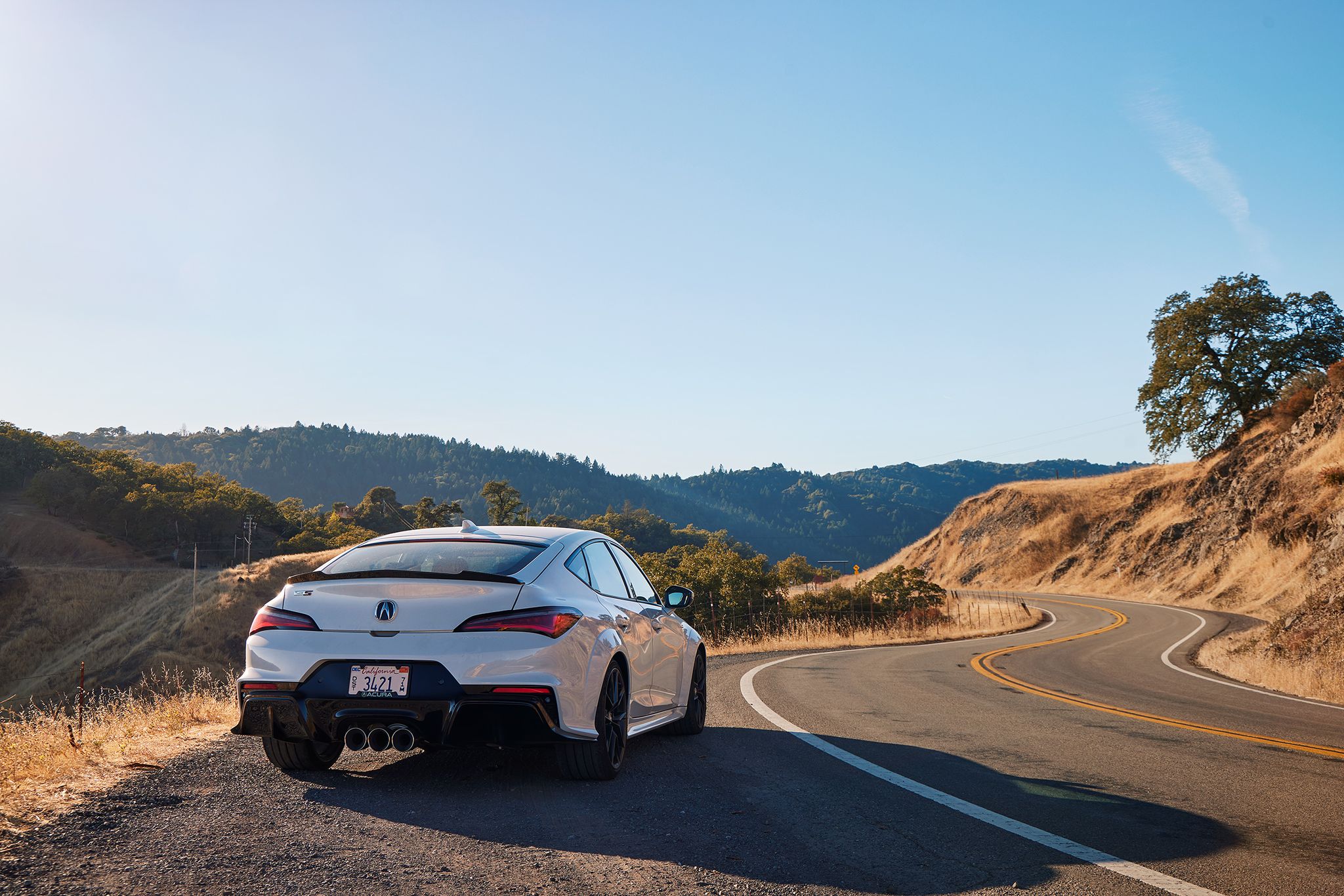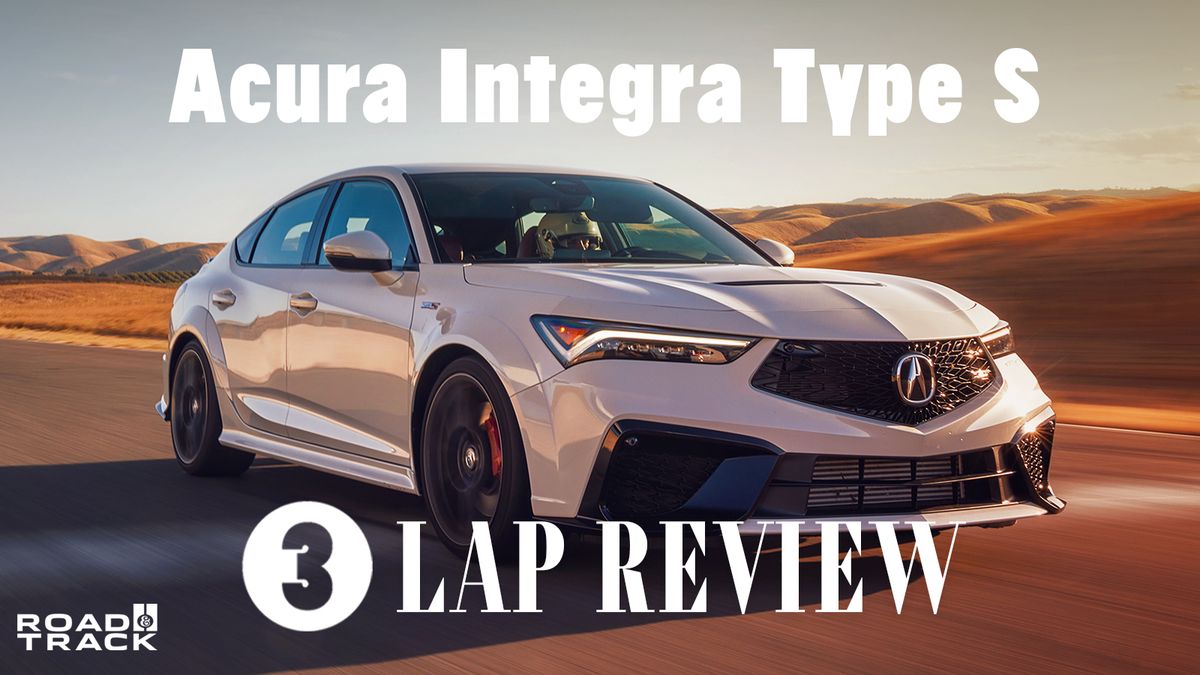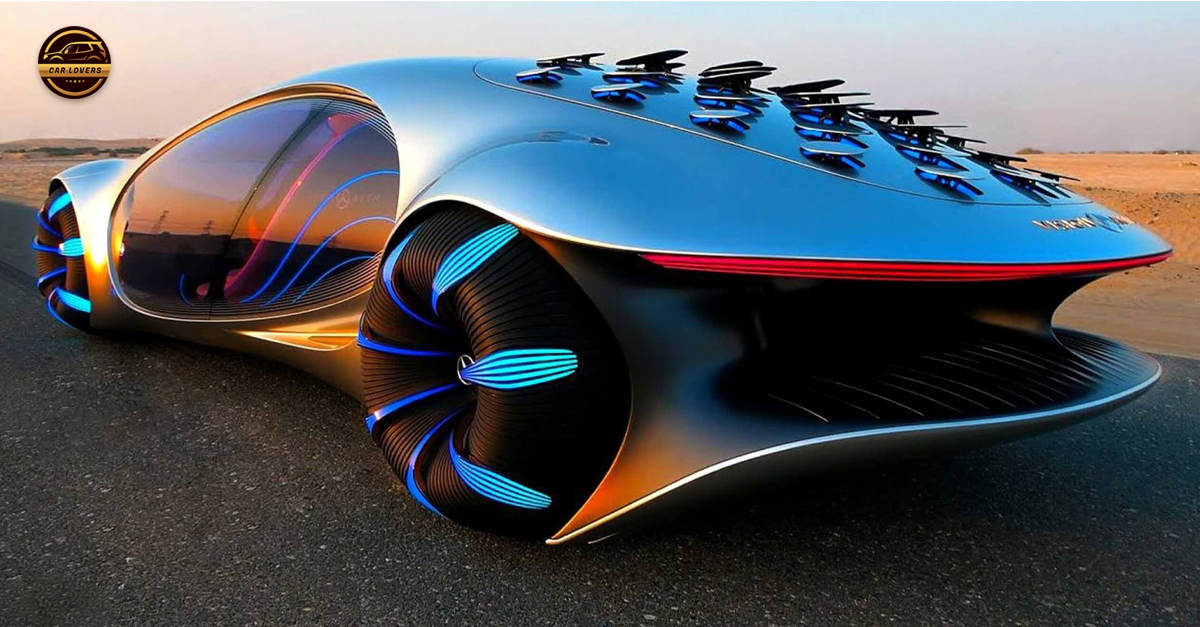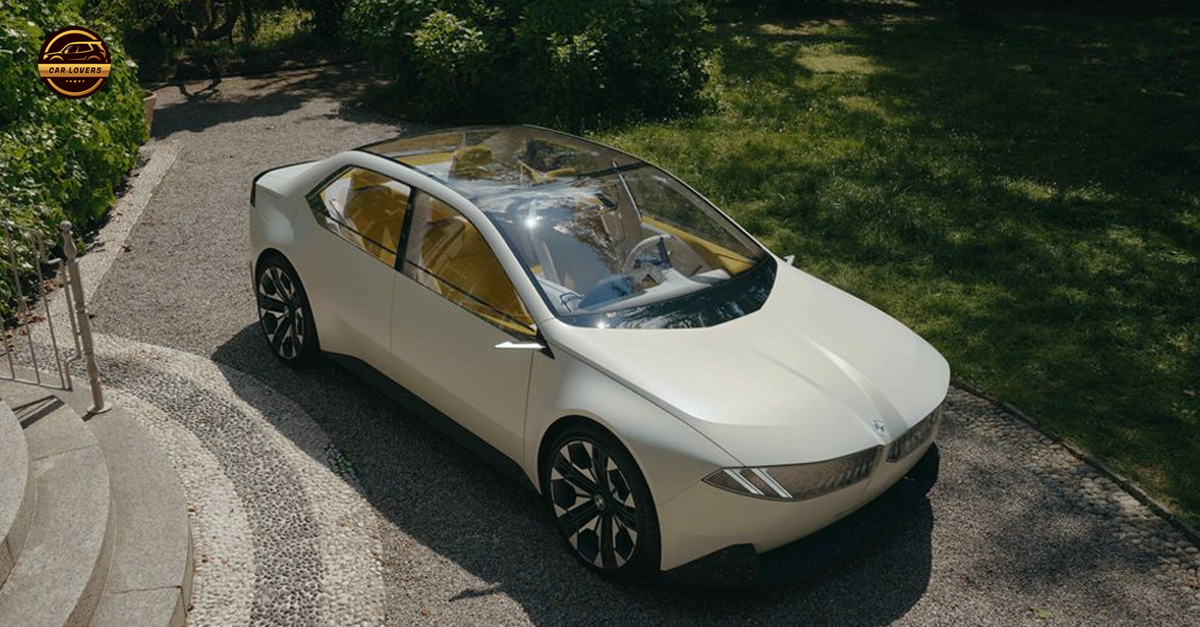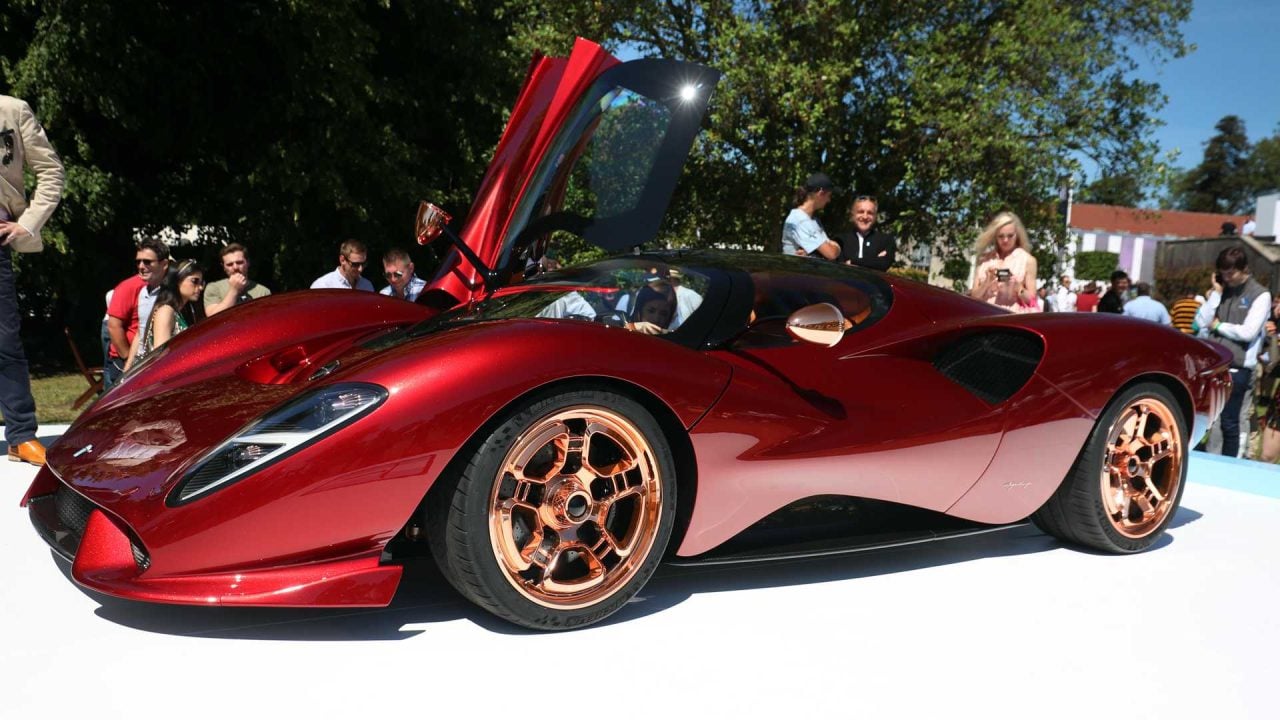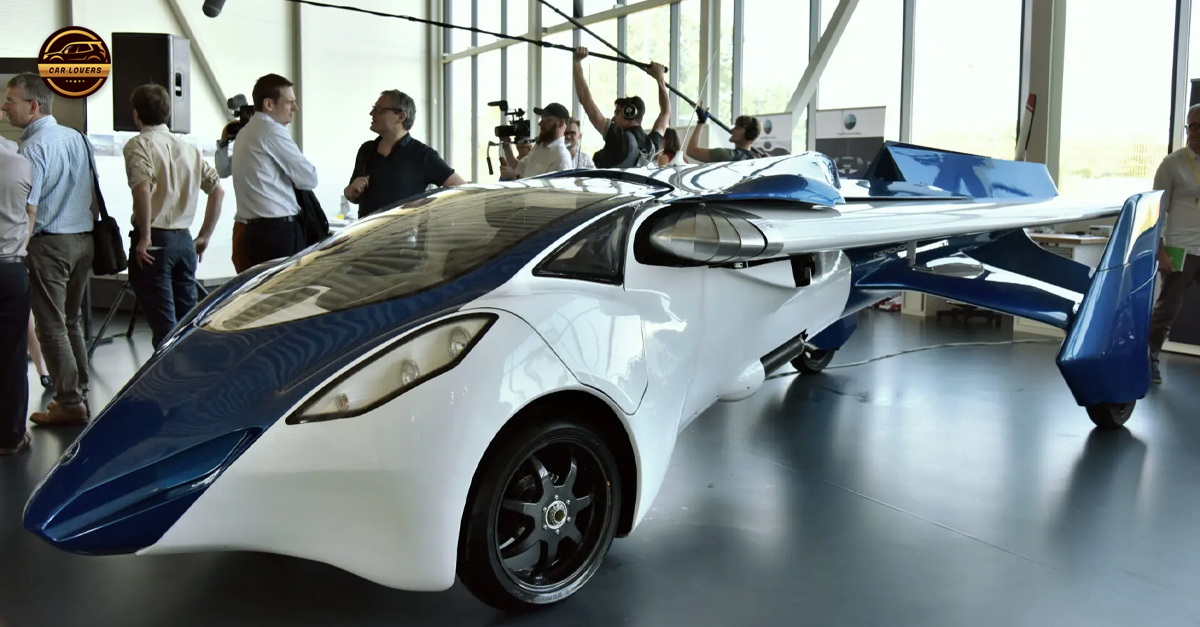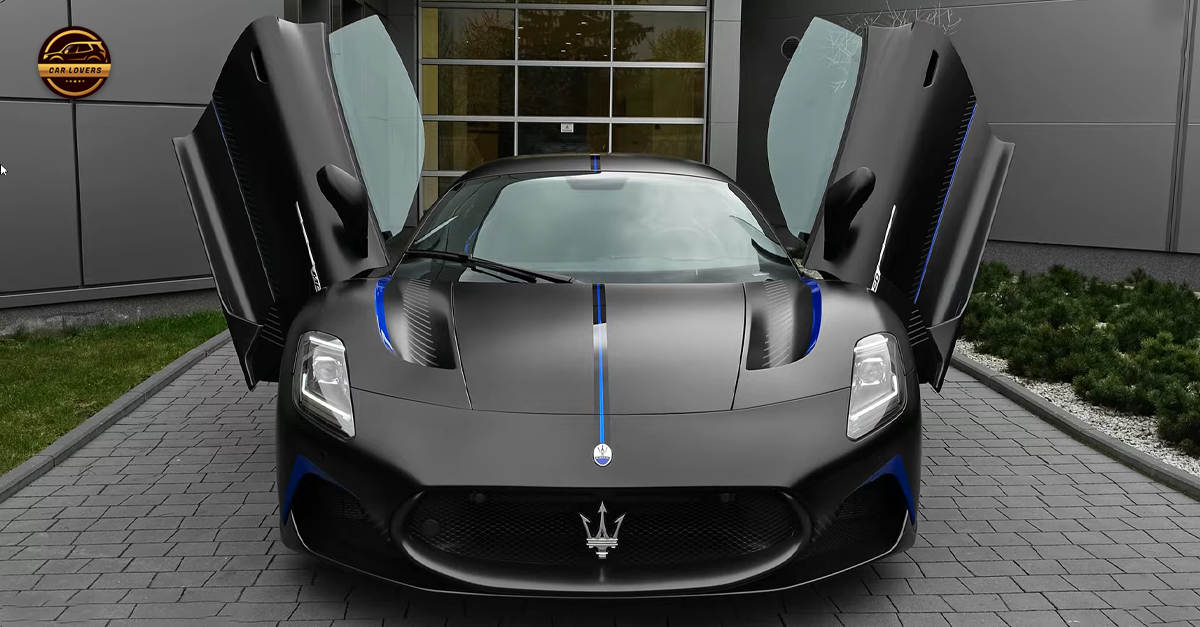The best performance cars aren’t the fastest and most expensive, of course. The Hyundai Veloster N proved that in 2020 by taking the PCOTY title. But the quality of this year’s opposition, even with two awards divided by the $100,000 line, made the Acura seem very vanilla in this distinguished company. It was the only car to have front-wheel drive, the only one to have a four-door bodyshell and—with the batshit exception of the BAC Mono—the only one here with four cylinders. To win, it would need to beat the considerable talents of the BMW M2, the Ford Mustang Dark Horse, and the Nissan Z Nismo—all brawnier, faster, and rear-wheel driven. Yet it did, and here’s why.
Because no part of the Acura’s everyday-ness was a liability. Even in this distinguished company, it never felt soft or slow or unexciting, spending much of its time confounding the preconceptions of judges who suspected it was only going to be making up the numbers, especially at the track. Experience has long proved that whenever there is a pit road packed with exotics, the slower and tamer cars tend to be used less, especially as time goes by and increasing confidence levels get folk hunting bigger thrills. The Acura bucked that trend, being not only the friendliest way to learn Thunderhill but also a car that got better with repeated experience.
The Acura’s ability to find traction is close to magical, the limited-slip differential helping the front axle both to bite hard onto a chosen line and hold it well beyond the point where almost any other wrong-wheel driver would be washing wide. Yes, the Integra will ultimately understeer, but even when that limit arrives, the front tires surrender progressively, and it is simple and instinctive to bring it back into line by easing the gas or, just as easy, to provoke it into oversteer deliberately with an aggressive lift to create some weight transfer. On Thunderhill’s longer corners, the Integra was nearly as throttle-adjustable as the snappier rear-drivers, while still keeping the additional Get Out Of Jail Free card that, if slip gets toward spin, more gas pulls it straight rather than adding extra angle.
Did it feel hugely fast on track? In this company, it did not. But even if the straights took a little longer to navigate, the Type S consistently proved that lap time is a poor metric for measuring enjoyment. No driver returned from a stint without having used every one of the Acura’s peak 320 hp on every possible occasion. It stood up to prolonged hard use too—tires and brakes took long sessions without fading. Plus, there was the tactile joy of what, against tough competition, was the best gearshift here; the clear winner on both accuracy and sensation. We didn’t all love the auto rev-match function on downshifts, though, with the need for a four-deep trip into the user interface to turn it off being one of our few voiced criticisms.
But while the Acura Type S may well go on track, it will spend much more time on road, and it is even better there. The normal instinct of engineers trying to make performance derivatives of mainstream models is the sort of performative sportiness that sees everything turned up to 11. That’s not the case with the Type S. In its default Comfort mode, it is soft and compliant, much more relaxed than its Civic Type R cousin, although still with a high level of feedback. Choosing Sport or Sport Plus mode firms up the suspension and adds snap to the throttle map, but they don’t turn the Acura harsh. (The official line is that Sport Plus in the Integra is similar to regular Sport in the CTR.)
On the roads of Northern California, the performance deficit between the Acura and our sharp-end contenders was trimmed and sometimes completely negated. The tighter and curvier the road, the happier the Type S felt. On straights it would inevitably fall back; when following a louder contender the Acura’s driver would often enjoy the novel experience of hearing the other car over the Integra’s four-pot zing. But the confidence under braking and wieldiness in turns meant few such advantages got banked for long—the Type S was a rearview mirror fixture for whatever was running ahead of it.
PCOTY is a test of driving, not price or features. The Acura didn’t gain advantage over our other sub-$100,000 contenders by being the cheapest car here. But it is definitely a substantial part of its appeal: This is a $51,995 car that feels entirely unhumble in the presence of pricier alternatives. While dealers are inevitably trying to gouge that desirability with the usual “market adjustment” bullshit, anybody getting an Integra Type S for close to MSRP should feel very smug, indeed.
The Integra Type S is unlikely to be all the performance car you would ever want. But it could be all that you actually need. Even in the most distinguished company, it still feels special.
